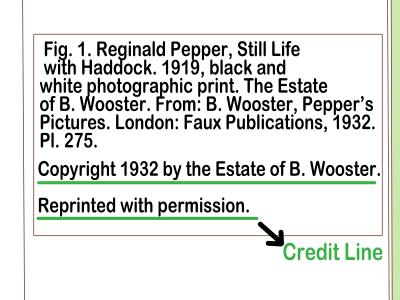Hey there, fellow photographers! If you’re eyeing Shutterstock as a platform to showcase and sell your images, it’s essential to understand how their licensing works. Licensing determines how your photos can be used, how much you earn, and what restrictions might apply. Getting a clear grasp of Shutterstock‘s licensing system can help you protect your work and maximize your earnings. So, let’s dive into what you need to know about licensing on
Types of Shutterstock Licenses Explained
Shutterstock offers two main types of licenses for your images: Standard License and Enhanced License. Each serves different needs and usage scenarios, so understanding the differences is key to choosing the right one for your images.
Standard License
The Standard License is designed for most typical uses. It allows customers to use your images in a variety of ways, such as websites, social media, presentations, and printed materials up to a certain limit. Typically, the Standard License covers:
- Up to 500,000 copies or views for digital or print materials
- Use in online advertising, social media posts, blogs, and websites
- Printed items like brochures, flyers, and magazines (up to 500,000 copies)
However, it does have restrictions. For example, if someone wants to use your image for merchandise like T-shirts or mugs, or in campaigns exceeding the license limits, they’d need an Enhanced License.
Enhanced License
The Enhanced License opens up more possibilities, especially for commercial and high-volume uses. It’s perfect if your photos are used in:
- Products for resale, like apparel, packaging, or merchandise
- Advertising campaigns with large audiences
- Films, TV, or large-scale billboards
This license removes the limits on copies and views, giving buyers more freedom to use your images in ways that could generate higher revenue. If you’re aiming for broader commercial applications or expect your images to be used extensively, offering an Enhanced License can be a lucrative option.
Key Takeaways
| Feature | Standard License | Enhanced License |
|---|---|---|
| Usage Limits | Up to 500,000 copies/views | Unlimited |
| Use Cases | Web, social media, print (up to 500k copies) | Merchandise, advertising, products for resale |
| Cost | Lower | Higher |
| Restrictions | Limited for commercial use | Greater freedom for commercial applications |
Understanding these licensing options helps you decide how best to protect and monetize your work. Whether you’re just starting out or have high-volume clients, knowing which license fits the usage scenario ensures you’re paid fairly and your rights are protected.
How Photographers Can Submit and License Their Photos
Getting your photos onto Shutterstock and making them available for licensing is an exciting process, but it’s important to understand how it works. If you’re new to stock photography, don’t worry — it’s pretty straightforward once you get the hang of it!
First things first, you need to create a contributor account on Shutterstock. Just head over to their website, sign up, and fill out some basic information. Once approved, you’ll gain access to the contributor dashboard where you can start uploading your images.
When submitting photos, keep these tips in mind:
- Follow the guidelines: Make sure your images are high quality, well-lit, and free of noise or distractions. Check Shutterstock’s technical requirements to ensure your files meet their standards.
- Tag and categorize: Use relevant keywords and categories to help buyers find your photos. Be specific and honest — think about what someone searching for your image might type in.
- Write clear descriptions: A good description can make a big difference. Describe what’s happening in the photo, the location, and any other details that might be helpful.
Once your images are uploaded, Shutterstock will review them. This review process can take a few days. If your photos pass the review, they’ll go live on the platform and be available for licensing.
Now, what about licensing? When someone downloads your photo, Shutterstock handles all the licensing agreements and payments. You earn a royalty based on your contributor level and the type of license purchased. It’s a seamless process that lets you focus on creating great images while they handle the business side.
Additionally, you can track your sales and earnings through the contributor dashboard. This transparency helps you understand what kinds of images are popular and how your portfolio is performing. Over time, you can optimize your submissions to better meet market demand and increase your earning potential.
Remember, consistency is key. Regularly uploading high-quality images, keeping your keywords accurate, and engaging with the community can help you build a strong presence on Shutterstock and grow your licensing opportunities.
Benefits of Licensing Photos Through Shutterstock
Licensing your photos through Shutterstock offers a ton of advantages, especially if you’re looking to turn your passion for photography into a steady income stream. Let’s explore some of the biggest benefits:
- Passive Income: Once your images are uploaded and approved, they can generate royalties every time someone licenses them. This means you earn money even when you’re not actively working on new projects.
- Global Exposure: Shutterstock is one of the largest stock photography platforms in the world. Your images can be viewed and licensed by customers from all over the globe, increasing your reach and potential sales.
- Ease of Use and Automation: The platform handles licensing, payments, and rights management, so you don’t need to worry about legal complexities or invoicing. It’s a streamlined process that lets you focus on creating.
- Revenue Potential: With a wide range of licensing options (such as standard and enhanced licenses), there’s room to earn more depending on how your images are used. Plus, Shutterstock offers tiered royalty rates that can increase as your portfolio grows.
- Support and Resources: Shutterstock provides helpful resources, tutorials, and a supportive community to help you succeed. They also offer insights into market trends, so you can tailor your submissions accordingly.
- Protection of Rights: Shutterstock’s licensing agreements ensure your rights are protected. They handle licensing disputes and prevent unauthorized use, giving you peace of mind.
Another big perk is the ability to build a diverse portfolio. You can upload a variety of images — from landscapes and portraits to abstract designs — and diversify your income sources. Plus, with the platform’s analytics tools, you can see which images perform best and refine your approach to maximize earnings.
In short, licensing your photos through Shutterstock not only provides a reliable income stream but also helps you grow as a photographer by exposing your work to a broad audience. Whether you’re a hobbyist or a professional, it’s a smart way to monetize your creativity while reaching people around the world.
Tips for Maximizing Earnings from Shutterstock Licensing
So, you’re eager to make the most out of your Shutterstock licensing journey? Great! Earning more isn’t just about uploading a ton of images; it’s about working smart and understanding what buyers are really looking for. Here are some practical tips to help you maximize your earnings:
Focus on High-Demand, Evergreen Topics
Research trending topics and evergreen themes that stay relevant over time. Think about industries like technology, health, business, and travel. When your images align with what buyers frequently search for, your chances of licensing increase. Keep an eye on Shutterstock’s trending searches or popular categories to guide your content creation.
Optimize Your Metadata
Your images are only as discoverable as the metadata you provide. Be descriptive, accurate, and strategic with your titles, keywords, and descriptions. Use a mix of broad and specific keywords, include relevant synonyms, and avoid spammy or irrelevant tags. This boosts your images’ visibility in search results and can lead to more licensing opportunities.
Create Diverse and High-Quality Content
Offer a variety of images—people, landscapes, business scenes, concepts, and more. High-quality, well-composed images are more likely to be licensed. Invest in good equipment, pay attention to lighting, and edit your photos to ensure they look professional. Also, consider including vectors and illustrations if they fit your style, as they’re often in high demand.
Consistency Is Key
Regularly uploading fresh content keeps your portfolio active and increases the chances of your images being seen. Set a goal to upload a certain number of images each week or month. Over time, this builds your reputation as a reliable contributor, which can lead to higher earnings and more licensing opportunities.
Engage with the Community
Participate in Shutterstock contributor forums, webinars, and tutorials. Learning from others, sharing your experiences, and staying updated on best practices can give you an edge. Sometimes, tips from fellow photographers can help you discover new niches or techniques to improve your sales.
Leverage Analytics
Use Shutterstock’s contributor dashboard to analyze which images perform best. Notice patterns—are certain themes or styles selling more? Focus on creating more of what works, and consider retiring or improving less popular images. Data-driven decisions can significantly boost your earning potential.
Conclusion and Final Thoughts on Shutterstock Licensing for Photographers
Getting started with Shutterstock licensing is an exciting journey that offers a great opportunity to turn your passion for photography into a steady income stream. Remember, success doesn’t happen overnight. It takes patience, consistency, and a willingness to learn and adapt. By understanding the licensing process, creating high-quality, relevant images, and actively optimizing your portfolio, you can increase your chances of earning more from your work.
Always stay informed about Shutterstock’s policies and the latest trends in the stock photography world. Keep experimenting with new ideas, and don’t be discouraged by initial setbacks. Every upload is a step toward building a robust portfolio and establishing your presence in the marketplace.
Most importantly, enjoy the process! Photography is about capturing moments, telling stories, and expressing your unique perspective. When you approach licensing with passion and professionalism, it not only benefits your wallet but also keeps your creative spirit alive. Happy shooting, and here’s to your success on Shutterstock!


